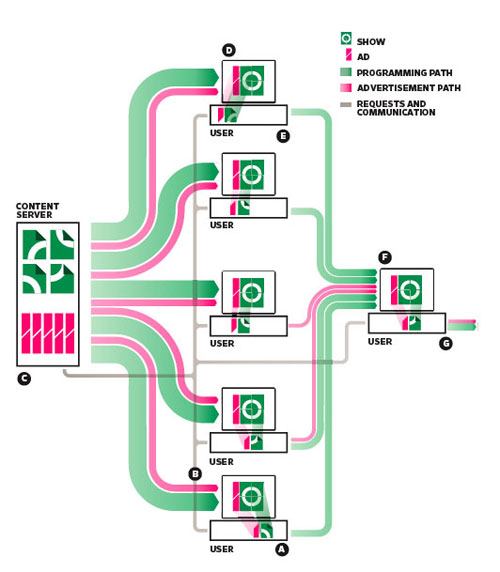
How Joost’s hybrid peer-to-peer system works. After Joost makes a show available, the first users to request it (A) query the network at large (B) to see whether peers can provide the program. If they can’t, the request goes to a content server (C), which streams the show, interspersed with individually targeted ads, directly to each viewer’s screen (D). While the users watch, short segments of the show and the ad are saved to their local hard disks (E). In this way, the entire show and a variety of ads are seeded throughout the network. So when another user (F) requests the same title, that show, along with a targeted ad, comes not from the server but from the network, one segment at a time. Once again, fragments of the show and ad are stored to the new user’s hard disk (G), ready to be streamed to others. – Ted Greenwald
I had a chance to play with Joost this weekend and it’s incredible. Daniel Salber (no url?) did a fantastic job of porting it to the Mac so quickly. I was impressed with how its not really that buggy and its alpha…
First random thoughts on Joost:
Wow, this is actually TV on the internet. People have been talking about it for ages but this is the first time I’ve seen anything approach traditional TV in terms of quality and ease of use on my computer. It’s full screen, good quality, near instant on, it’s free, and it has high quality content. If Joost opens its platform to allow people to upload their stuff this I’ll be all over this thing like a fat kid on a smartie. If they keep it closed off they just won’t be able to compete with traditional TV.
I love the idea of never having to store video content locally when you can just query it any time from online. The hybrid P2P model of video distribution is also fascinating and it appears to be working!
This Wired article on Joost explains everything…
I recommend you try it out.